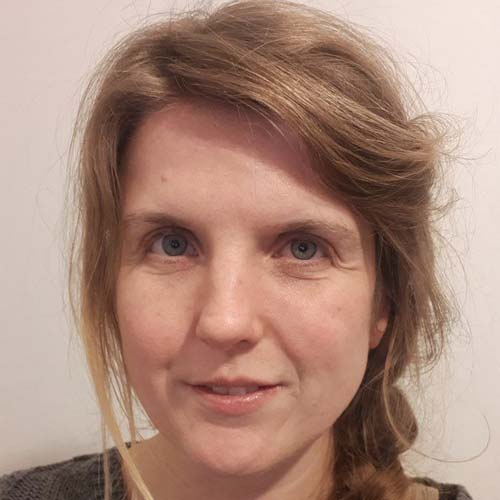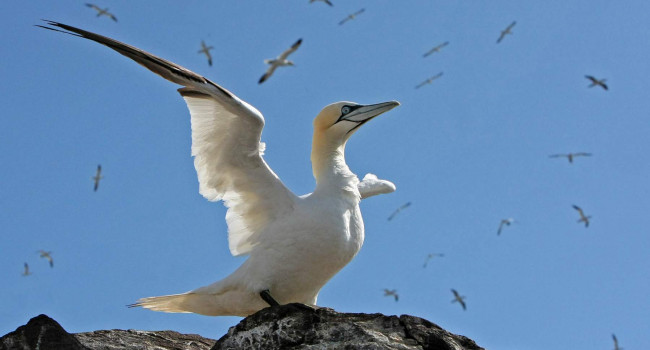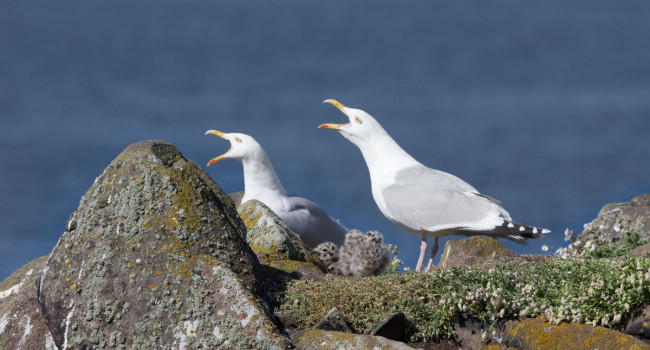Challenges in quantifying the responses of Black-legged Kittiwake to habitat variables and local stressors due to individual variation

Author(s): O’Hanlon, N.J., Thaxter, C.B., Clewley, G.D., Davies, J.G., Humphreys, E.M., Miller, P.I. Pollock, C.J., Shamoun-Baranes, J., Weston, E. & Cook, A.S.C.P.
Published: February 2024
Journal: Bird Study
Digital Identifier No. (DOI): 10.1080/00063657.2024.2305169
During the 2021 breeding season, BTO scientists tracked 20 Kittiwakes, fitted with small GPS devices, from Whinnyfold – part of the Buchan Ness to Collieston Coast Special Protection Area – in Aberdeenshire. There are several existing offshore wind farms within the vicinity of this Kittiwake colony, with several more proposed for the future.
The study found no evidence of habitat selection when averaging across all individuals tracked, with large uncertainty in how the environmental conditions (proxies of prey availability, and including sea surface temperature, sea depth, and the presence and location of ocean fronts) were linked to where the Kittiwakes foraged. Instead, the results revealed considerable variation among individuals. This was not only in the response of individuals to local environmental conditions, but also in the extent to which they visited areas where wind farms had either already been built or are proposed. However overall, the amount of time spent by individual birds within the existing and proposed offshore wind farms’ footprints was relatively low.
The study’s results emphasise the importance of understanding individual variation when measuring the impact of specific pressures on Kittiwake, and other seabird populations. By averaging across individuals to focus on population responses, we may be under- or overestimating the impact of potential threats, such as offshore wind farms, on some individuals. This could lead to potential unforeseen consequences on demographic rates, such as survival and breeding success, especially where individual differences are driven by factors such as sex, age or breeding stage.
Abstract
Capsule
Strong individual variation was observed in the responses of Black-legged Kittiwakes to environmental covariates related to foraging behaviour and habitat selection, and in the overlap with nearby offshore windfarms (OWFs).
Aims
To determine whether environmental covariates consistently drive Kittiwake foraging behaviour and how this may influence overlap with local potential stressors at the population and individual level.
Methods
We used two complimentary methods (Hidden Markov Models and Step Selection Functions) to classify the at sea behaviour of Kittiwakes and identify environmental covariates associated with foraging at a colony in northeast Scotland during the 2021 breeding season. We also calculated the overlap, by behaviour, of individuals with several operational and proposed OWF within the vicinity.
Results
We found no evidence for habitat selection at the population level, with uncertainty in which conditions were linked to foraging, due to considerable variation in the responses of individuals to local environmental conditions. This was attributed to unmeasured intrinsic variation among individuals and high competition among conspecifics and other seabird species. We also observed variation among individuals in the extent of overlap with a local stressor, OWFs, by behaviour.
Conclusion
Individuals within a population that do not respond consistently to environmental conditions will likely vary in their vulnerability to local stressors, in this case to OWFs. This could lead to unforeseen population level consequences if not accounted for. Therefore, it is important to identify and understand variation among individuals to better establish population level consequences of different foraging areas and overlap with stressors to reduce uncertainty in current impact assessments.









Share this page